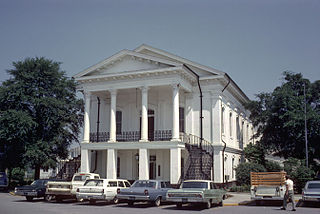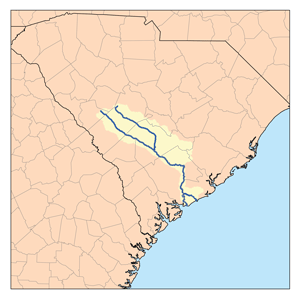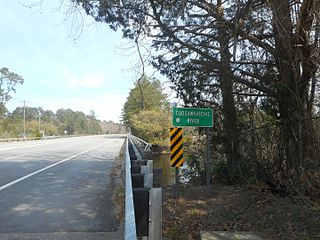The Salkehatchie River originates near the City of Barnwell, South Carolina and accepts drainage from Turkey Creek and Whippy Swamp before merging with the Little Salkehatchie River to form the Combahee River Basin, which empties into Saint Helena Sound and the Atlantic Ocean. Prior to the confluence, the Little Salkehatchie River accepts drainage from Lemon Creek, Buckhead Creek, and Willow Swamp.

Barnwell is a city in and county seat of Barnwell County, South Carolina, United States, located along U.S. Route 278. The population was 4,750 at the 2010 census.
The Little Salkehatchie River originates in the Town of Blackville, South Carolina and accepts drainage from Lake Cynthia, Guess Pond, Brooker Pond, Ghants Branch, Halfmoon Branch, and Long Gall Branch. Further downstream, the river accepts drainage from Long Pond, Ben Rice Bay, Colston Branch, and Long Branch. There are a total of 111.7 stream miles and 397.4 acres (1.608 km2) of lake waters in this watershed, all classified freshwater. .

The Combahee River is a short blackwater river in the southern Lowcountry region of South Carolina formed at the confluence of the Salkehatchie and Little Salkehatchie rivers near the Islandton community of Colleton County, South Carolina. Part of its lower drainage basin combines with the Ashepoo River and the Edisto River to form the ACE Basin The Combahee empties into Saint Helena Sound near Beaufort, which in turn empties into the Atlantic Ocean.
United States General William Tecumseh Sherman of the American Civil War marched his troops across this river and the swamps surrounding it on his way to capture Columbia, South Carolina. [1] This crossing included winning the Battle of Rivers' Bridge, defeating a Confederate force led by Major General Lafayette McLaws.

William Tecumseh Sherman was an American soldier, businessman, educator, and author. He served as a general in the Union Army during the American Civil War (1861–65), for which he received recognition for his outstanding command of military strategy as well as criticism for the harshness of the scorched earth policies he implemented in conducting total war against the Confederate States.

The American Civil War was a war fought in the United States from 1861 to 1865, between the North and the South. The Civil War is the most studied and written about episode in U.S. history. Primarily as a result of the long-standing controversy over the enslavement of black people, war broke out in April 1861 when secessionist forces attacked Fort Sumter in South Carolina shortly after Abraham Lincoln had been inaugurated as the President of the United States. The loyalists of the Union in the North proclaimed support for the Constitution. They faced secessionists of the Confederate States in the South, who advocated for states' rights to uphold slavery.

Columbia is the capital and second largest city of the U.S. state of South Carolina, with a population estimate of 134,309 as of 2016. The city serves as the county seat of Richland County, and a portion of the city extends into neighboring Lexington County. It is the center of the Columbia metropolitan statistical area, which had a population of 767,598 as of the 2010 United States Census, growing to 817,488 by July 1, 2016, according to 2015 U.S. Census estimates. The name Columbia is a poetic term used for the United States, originating from the name of Christopher Columbus.
The University of South Carolina named its two-year regional campus after the Salkehatchie River. The river flows through Allendale, Bamberg, Barnwell, Colleton and Hampton counties, the same area served by University of South Carolina Salkehatchie.

The University of South Carolina is a public research university in Columbia, South Carolina. It has seven satellite campuses throughout the state and its main campus covers over 359 acres (145 ha) in downtown Columbia not far from the South Carolina State House. The university is categorized by the Carnegie Foundation for the Advancement of Teaching as having "highest research activity." It has been ranked as an "up-and-coming" university by U.S. News & World Report, and its undergraduate and graduate International Business programs have ranked among the top three programs in the nation for over a decade. It also houses the largest collection of Robert Burns and Scottish literature materials outside Scotland, and the world's largest Ernest Hemingway collection.
Allendale is a town in Allendale County, South Carolina, United States. The population was 3,482 at the 2010 census, a decline from 4,052 in 2000. It is the county seat of Allendale County.

Bamberg County is a county located in the U.S. state of South Carolina. As of the 2010 census, the population was 15,987, making it the fourth-least populous county in South Carolina. Its county seat is Bamberg.









